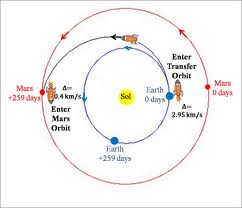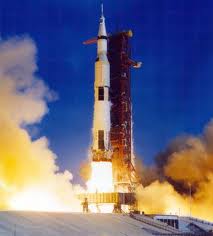 I am excited thinking, reading, and talking about proposed Mars habitats for the first human explorers on Mars. Actually, many of the proposals address the habitat design with naval terms for a ship like wardroom instead of living room, galley instead of kitchen, sickbay, and bunks! That got me to thinking about the US Navy’s nuclear submarines that patrol the ocean with a crew of over 100 and they can stay submerged up to 6 months.
I am excited thinking, reading, and talking about proposed Mars habitats for the first human explorers on Mars. Actually, many of the proposals address the habitat design with naval terms for a ship like wardroom instead of living room, galley instead of kitchen, sickbay, and bunks! That got me to thinking about the US Navy’s nuclear submarines that patrol the ocean with a crew of over 100 and they can stay submerged up to 6 months.
So here is my plan for the least expensive first Mars Expedition, which will consist of 3 nuclear submarines that have been surplused by the US Navy, 3 new heavy lift rockets, one Mars descent rocket, one Mars orbit ascent rocket, two Earth return rockets, and a 6-member crew spacecraft and earth-orbit rocket.
First, one Earth return rocket will be attached to a submarine and put into Earth orbit by one heavy lift rocket. A second submarine with Earth return rocket attached will be launched into Earth orbit. Next, attach the Mars descent rocket to the third submarine AND attach the Mars ascent rocket to the submarine emergency escape pod; then attach both to the third submarine. Now launch the third submarine into Earth orbit with the two other subs. I know, launching “submarines” is ridiculous, but please keep reading and see if you agree with me!!!
Finally, launch the 6-member crew to dock with and enter the third submarine. After checkout of all systems on all three submarines, the upper stage of the heavy lift rocket attached to each submarine will ignite and send all three together on a flight path to Mars. The third submarine will contain the 6-member crew and rockets for descending and ascending from Mars while the other two subs will remain empty for emergency use and return to Earth capabilities.
When arriving at Mars all three submarines will enter Mars orbit, and after checkout the third submarine will land on Mars while the other two submarines remain in orbit. After a period of exploration, the crew will return to Mars orbit in the submarine emergency escape pod and transfer to one of the two submarines. Finally the Earth return rockets will fire and both submarines will return to Earth together.
When reaching Earth orbit, the crew and Mars samples will transfer to the crew spacecraft left in orbit previously and return to Earth. The two submarines will be left in Earth orbit for re-supply and reuse for another Mars trip.
Obviously, launching submarines is not feasible because of many factors, but particularly weight and inward pressure design for a submarine vs. outward pressure design required for a spacecraft. Of course, nuclear reactors could be replaced with solar panels to dramatically reduce weight, etc. and etc. Still, everywhere in the scenario above where you read “submarine”, you should replace it with “trans-Earth/Mars spacecraft”.
The main point of this blog post is the technology for an independent self-sufficient living environment; such as, a nuclear submarine with a 100-member crew has been around since the 1950’s and extending that capability for space travel will not require a new technology break-through. So let’s develop the new rocket engine technology and explore Mars now.
What current technology or slightly improved technology would you use to send explorers to Mars?
